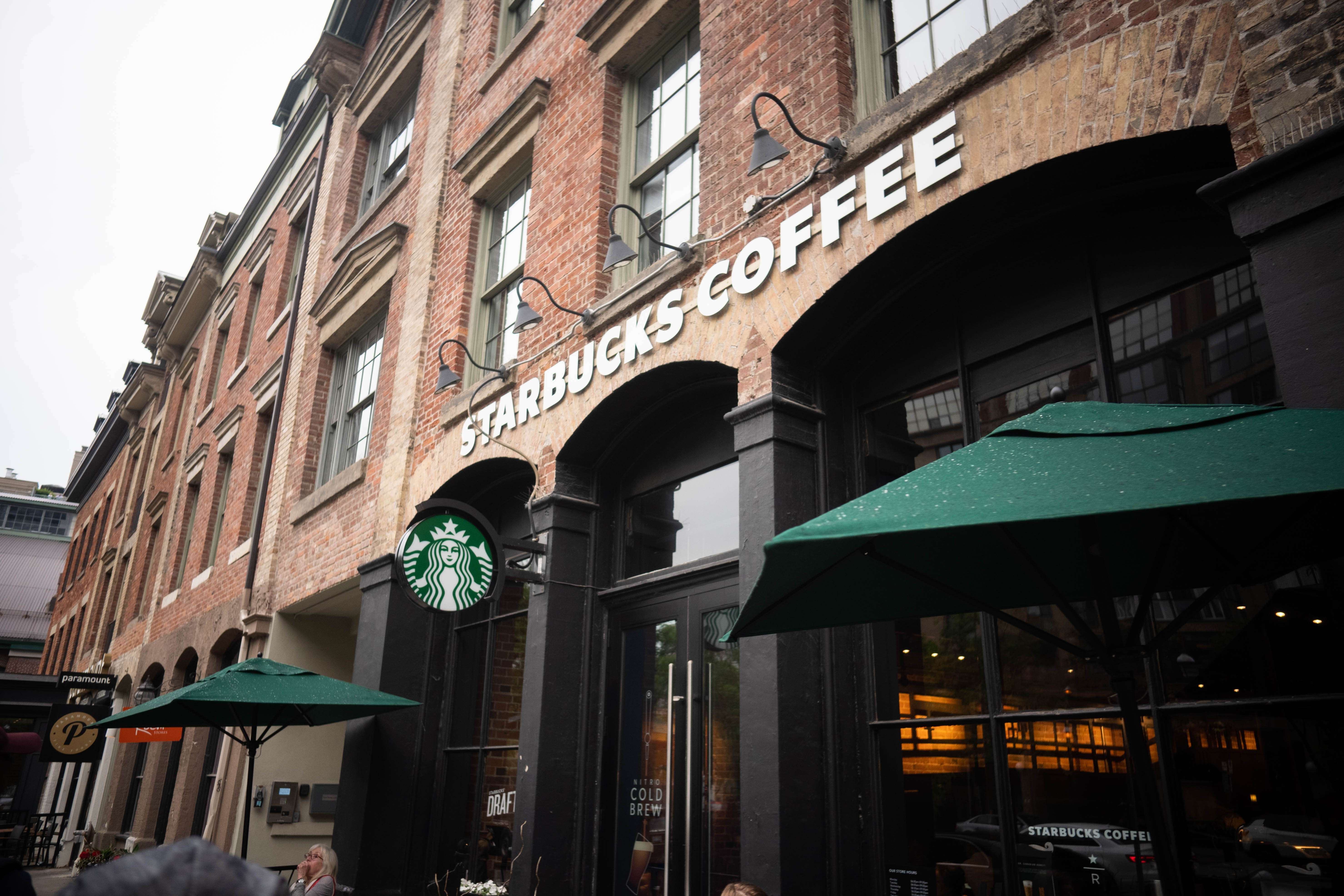- 20 September 2023
- No Comment
- 2594
Starbucks Case Study – Navigating Challenges and Reclaiming Growth

Starbucks Case Study: Starbucks, a global coffeehouse giant, faced an unprecedented challenge as it grappled with market saturation, economic recession, and shifting consumer preferences. This Starbucks case study not only highlights the obstacles Starbucks encountered but also sheds light on the strategic decisions and brand transformation that allowed the company to overcome adversity and reclaim its growth trajectory. In this comprehensive case study, we delve into the tumultuous year of Starbucks in 2008.
I’m Nabeel — a seasoned Chartered Accountant with a remarkable 17-year journey through the worlds of investment banking, management consulting, and entrepreneurship. Join me on this journey as we uncover valuable insights and pro tips for businesses facing similar challenges.
Starbucks Case Study – Problem Statement
Starbucks’ Struggles in 2008
The year 2008 was a tumultuous one for Starbucks. The challenges that loomed large on the horizon included:
- Market Saturation: Starbucks had expanded aggressively across the United States, resulting in market oversaturation. Many neighbourhoods were adorned with multiple Starbucks outlets competing for the same customer base.
- Economic Recession: The global economic recession, ignited by the financial crisis of 2007-2008, had a profound impact on consumer behavior. People tightened their belts, and premium-priced coffee was suddenly deemed a discretionary luxury.
- Shifting Preferences: Consumer preferences were evolving rapidly, with an increasing focus on healthier choices and sustainability. Starbucks’ menu, predominantly featuring indulgent offerings, was out of sync with these evolving tastes.
- Brand Perception: Starbucks was battling the perception of being an expensive and elitist brand. The “Starbucks experience” was deemed overpriced, and it was essential to redefine the brand’s image.
Starbucks Case Study – Identifying Root Causes
Uncovering the Underlying Issues of Starbucks in 2008
To address these challenges effectively, it was imperative to identify their root causes:
- Overexpansion: Starbucks had grown at a breakneck pace, opening stores at a rate that was ultimately unsustainable. This rapid expansion led to a neglect of existing stores and a deterioration in their performance.
- Lack of Innovation: While Starbucks had been a pioneer in coffee culture, it had fallen behind in offering healthier and more diverse menu options. This left it vulnerable to changing consumer preferences.
- Economic Realities: The economic recession forced consumers to reassess their spending habits. Premium coffee was perceived as an unnecessary extravagance during this period.
- Emerging Competition: New competitors, including fast-food chains and convenience stores, entered the market, offering quality coffee at more affordable prices. Starbucks faced competition not only from traditional rivals but also from unconventional sources.
Starbucks Case Study – A Strategic Shift 
In response to these formidable challenges, Starbucks executed a comprehensive strategic shift:
Store Closures – Pruning for Growth
One of the most significant moves was the decision to close nearly 600 underperforming company-owned stores in the United States. This bold step addressed the pressing issue of market saturation, allowing the company to refocus on profitable locations and markets.
Returning to the Coffee Core
Starbucks redefined its core business by streamlining its menu and eliminating items that were not aligned with the essence of the brand. This streamlined approach aimed to elevate the coffee experience and reduce operational complexities.
Innovative Menu of Starbucks
Recognizing the need for change, Starbucks introduced healthier food options and unveiled the “Pike Place Roast” coffee, a milder blend designed to appeal to a broader customer base. The innovation in the menu of Starbucks was in tune with evolving consumer preferences.
Repositioning the Brand
Efforts to transform the brand’s perception were central to Starbucks’ strategy. The “Transformation Agenda” was launched to reconnect with customers, emphasize quality, and champion sustainability, signaling a new era for Starbucks.
Embracing the Digital Realm
Starbucks ventured into the digital domain with the introduction of mobile payments and a loyalty program. These digital initiatives not only enhanced the customer experience but also contributed to increased sales.
Financial Impact of the 2008 Crisis on Starbucks
- Declining Revenue: During the crisis, Starbucks experienced a significant decline in its revenue. The economic downturn forced many consumers to cut back on discretionary spending, impacting the company’s sales.
- Stock Performance: Starbucks’ stock price also reflected the challenges faced during the crisis. The stock price experienced a notable decline during this period, which affected shareholder value.
- Employee Layoffs: To control costs, Starbucks had to lay off a significant number of employees, which was a difficult decision for the company and had implications for employee morale.
Starbucks Case Study – Recovery and Future Growth
The strategic shift undertaken by Starbucks in 2008 bore remarkable fruit:
Financial Rejuvenation
The store closures, along with cost-cutting measures and operational improvements, resuscitated Starbucks’ financial health. The company emerged from the crisis leaner and more efficient.
Elevated Customer Experience
The focus on product innovation and digital initiatives breathed new life into the customer experience. Loyalty programs and mobile payments became integral to Starbucks’ interaction with customers.
Brand Transformation
Starbucks successfully repositioned its brand as more accessible and socially responsible. It communicated its commitment to quality and sustainability, resonating with a broader audience.
Global Expansion
While the focus was on consolidating its U.S. operations, Starbucks continued its global expansion efforts, entering new markets and forming strategic partnerships.
Pro Tips for Businesses
Learning from Starbucks
Starbucks‘ journey in 2008 offers invaluable lessons for businesses navigating turbulent waters:
Proactive Assessment
Regularly assess your market presence and identify areas of oversaturation or diminishing returns. Pruning underperforming aspects can pave the way for growth.
Agile Adaptation
Stay attuned to shifting consumer preferences. Adapt your products or services to meet evolving demands promptly.
Brand Flexibility
Your brand’s perception is paramount. Be willing to reposition your brand to align with changing customer values and market dynamics.
Digital Transformation
Embrace digital technologies to enhance customer experiences and streamline operations. In today’s digital age, a strong online presence is non-negotiable.
Starbucks Case Study – Resilience and Reinvention 
In times of crisis, resilience and the willingness to reinvent are your greatest assets. Starbucks’ transformation exemplifies the rewards of bold and strategic decision-making.
As a seasoned business consultant, I find Starbucks’ experience in 2008 to be an illuminating case study for businesses navigating turbulent waters. The lessons we’ve unearthed throughout this journey provide a compass for organizations in similar predicaments.
From my perspective, the Starbucks case study underscores the paramount importance of adaptability, innovation, and staying attuned to market dynamics. It serves as a stark reminder that even the most prominent brands can face adversity and must be prepared to evolve.
As businesses move forward, it is crucial to internalize the significance of customer-centricity, cost-efficiency, and strategic shifts. These principles, exemplified by Starbucks, can spell the difference between stagnation and resurgence.
Embracing change, diversifying offerings, and maintaining an unwavering commitment to quality and customer experience can pave the way for lasting success. Starbucks not only rebounded from its setbacks but also emerged stronger and more attuned to its customers’ evolving needs.
So, as you chart your business journey, remember these valuable lessons from Starbucks in 2008. Embrace change, prioritize your customers, and stay agile in the face of challenges. By doing so, you’ll not only weather the storms but also find opportunities to thrive and create a lasting legacy in your industry.
